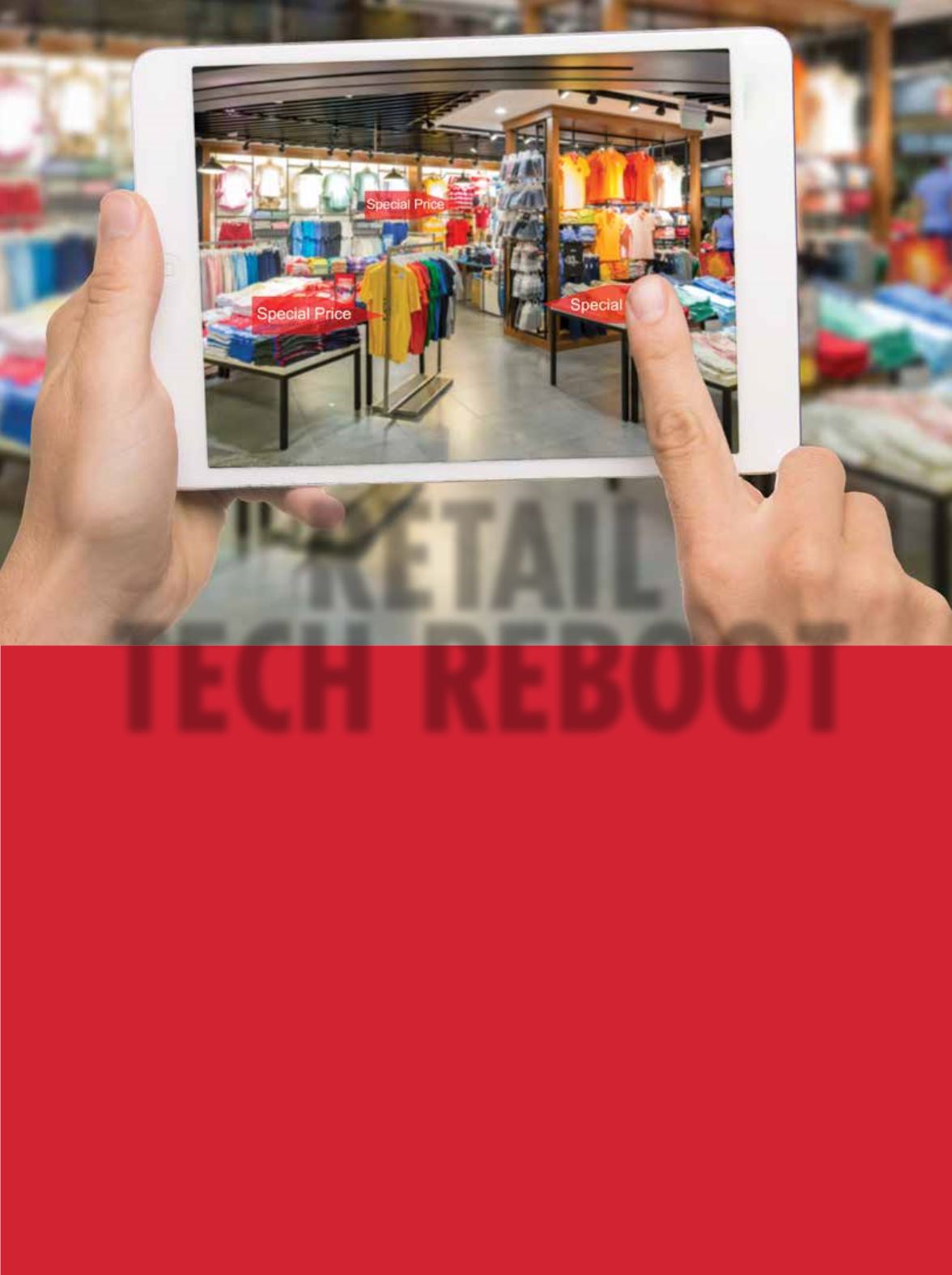

T
he race is on to digitize the
brick-and-mortar store, and
there is no turning back.
Anxious to stem customer
defections to Amazon
and remain relevant amid record e-
commerce growth and declining foot
traffic, major physical retailers are
placing huge bets on super-high-tech
wizardry they hope will engage shop-
pers enough to keep them coming
through the doors.
One only need look to Walmart,
which recently launched a tech incu-
bator to invest in augmented reality,
machine learning, robotics and other
emerging technologies, while rival
Target is buying and embedding tech
startups into its Target+Techstars
accelerator program. Leading grocer
Kroger Co., meanwhile, for some
time has been testing so-called smart
shelves that can track inventory, au-
tomate pricing and alert shoppers to
item location. Other slick examples
include virtual reality goggles at IKEA
and Lowe’s that let shoppers preview
furniture in their homes or virtually
design spaces, Nordstrom’s use of
chatbots to suggest holiday gift ideas,
and interactive walls and mirrors at
clothing dealer Rebecca Minkoff that
are designed to ease and enhance
the shopping experience.
In between today’s reality, how-
ever, and a time when robots know
our purchase intent before we do and
Amazon’s checkout-free stores dot the
landscape, smaller and less-funded
shopkeepers considering tech invest-
ments should heed some sage advice
from Stefan Wentz, chief product and
strategy officer at commerce tech-
nology provider Radial. “Before I do
augmented reality or smart mirrors,”
Wentz recently told eMarketer, “how
do I make sure that I still have custom-
ers to serve in five years?”
A near-term perspective
of in-store IT
By
Martin
Vilaboy
Retail
Tech Reboot
Inside
Outdoor
|
Spring
2017
28
















